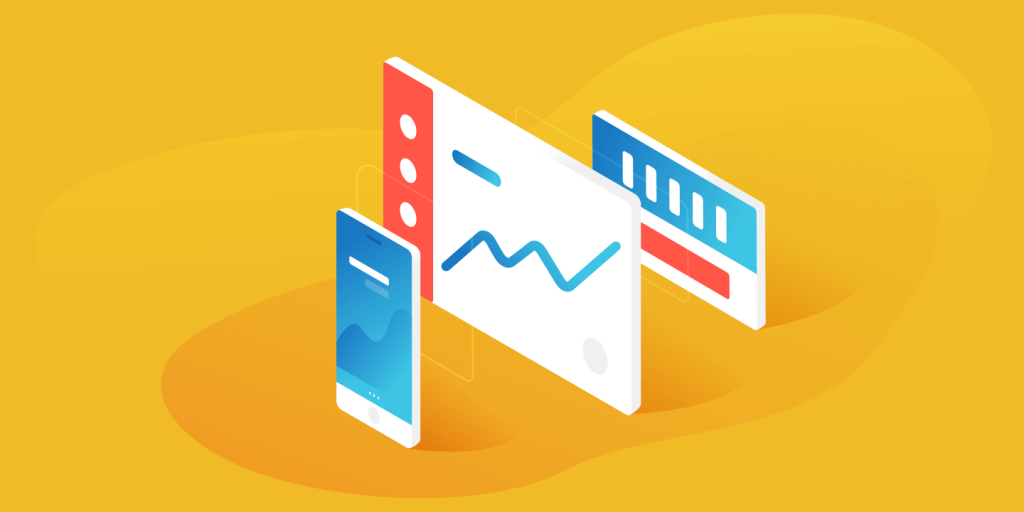Customer effort score isn’t just about the ranking as much as it is about proactively thinking about ways to address it.
Despite the fact that 80% of organizations use Customer Satisfaction as a way of gauging their customers’ experiences, there are a number of measurements beyond CSAT that can give you an even better picture of how customers are feeling. One of these measurements, Customer Effort Score, is a metric that gauges how much effort a customer had to exert to get to their answer or accomplish their goal. It’s also a key indicator of loyalty: 96% of customers who exert a lot of effort in service interactions are less loyal than those who don’t.
Customer Effort Score surveying is pretty straightforward: it’s a single question asked after an interaction or sale that says “how easy was it for you to get the solution to your problem?” Then, you average out the response metric across all of your customers to gain deeper customer effort insights into how difficult or easy they perceive your product as being. Using customer effort insights like this to modify your approach to the customer experience can be an excellent way to drop your effort score and boost other customer metrics, like CSAT.
For instance, only 9% of people who have had a low-effort support experience are going to churn, versus 96% of people who have had to exert high effort. Let’s take a look at some other ways that you can heighten your customer experience and drop your effort score.
 Provide Help in Context
Provide Help in Context
Shockingly, 58% of your support volume comes from people who have already searched your documentation. That means that they’ve tried to solve their issue on their own in your product, then by going to your help site and searching, and then by reaching out to you—that’s a lot of effort to go through. Instead, why not provide them with help on that first page, in your product, through live chat? We’ve seen live chat used for sales and marketing, so why not support?
Including support chat on pages like billing or account management can make for a better experience and less effort for your customers. When you offer people what they’re looking for right before they realize they’re looking for it, it can feel like a magical experience. Offering support or guidance in context does just that: you give customers the opportunity to ask questions right where they are, rather than forcing them to go to your help documentation, or to Gmail to write out a letter.
Not only that but providing these kinds of options helps to boost retention: almost 70% of the identifiable reasons why customers left companies had nothing to do with the product. In fact, most of the time the main reason for switching was the poor quality of service. This could be anything from needing a faster response, to not finding the answer they were looking for—both of which can be avoided by providing in-context support. Focusing on this kind of thing isn’t just beneficial to your customers, either: businesses that grow their customer retention rates by as little as 5% typically see profit increases ranging from 25% to 95%.
 Give Your Team Context
Give Your Team Context
The less information you have to ask a customer for in the beginning of their interaction, the better—but the more information employees have, the more helpful they can be, right? Using tools that offer integrations can be a helpful way to provide context to your employees without needing to ask your customers for a bunch of information as well.
Using integrated tooling to get data from other tools you use outside of your helpdesk can be a great way to give even more context around where a customer might be coming from. For example, consider FullStory, a tool that allows you to see in-app recordings of what your customer has done within your product leading up to the moment they reached out to you.
This is another one-two punch, too. Improving the customer journey has the potential to not only increase customer satisfaction by 20%, but also to lift revenue by up to 15% while lowering the cost of serving customers by as much as 20%.
 Meet your customers where they are
Meet your customers where they are
It shouldn’t be difficult for people to get help. No one should have to hunt for a way to reach out to you. While in-app chat helps people to ask for help in-context, providing multiple channels so that customers can reach out wherever and whenever they want is next level support. If they’re shopping on their phone, they should be able to get in touch with you there; if they’re browsing social media for reviews of your product, they should be able to fire off a tweet and have your team respond. The less effort they have to expend to get to you, the better.
Historically, 61% of customers have not been able to easily switch from one channel to another when interacting with customer service. For example, if someone reaches out over Twitter first, it may be difficult for them to transition to having an email or phone conversation without having to provide all of the same information over again. Furthermore, 45% of consumers believe that companies don’t deliver multichannel experiences fast enough—so even if you are giving them the means to reach out where they want to, it might not be as quickly as it could, or should, be.
 Personalization
Personalization
There is nothing more effortless than not having to reach out at all. Make it easy for your customers to get the information they need before they need it by creating personalized guidance and emails based on where they are at in the customer journey. Automated sending and predictive AI helps get customers where they need to go. Moving beyond that, you can keep it personal by using aggregated user data in order to get the timing of your sending perfect.
While personalization is a current hot trend in marketing, it’s valuable in the customer experience world, too. The top five benefits of personalization, according to a survey done by Evergage include increased visitor engagement (55%), improved customer experience (55%), improved brand perception (39%), increased conversion rates (51%) and increased lead generation and customer acquisition (46%). All of those are hugely beneficial when it comes to retention and gaining new customers, the two main focuses when driving towards a lower effort score.
Personalization makes it so that your customers don’t have to dig deep to discover what parts of your offering are going to be the most or least valuable to them. You surface what is valuable and important in an easily digestible way to make them feel as though they are walking along their customer journey effortlessly. That’s the type of stuff that cultivates the loyalty of legends.
Conclusion
Customer effort score isn’t just about the ranking as much as it is about proactively thinking about ways to address it. Go into site and feature design with the intention to make it as easy-to-use as possible. Make it easy for customers to get the help that they need in context by offering in-app chat or support documentation. You can also do some proactive support via email, or automation that keeps track of where your customers are on their journey and surfaces important information as needed.
Always give customers the means to reach out to you where and when they want to: it should be easy to find a way to contact your company whether they are on social media, on your webpage, or browsing on their phone. Finally, try not to put any barriers in their way once they figure out how to reach you.
Give your support team members all of the tools that they need to understand where your customer is coming from and what information they’ve already provided.
There’s nothing more frustrating or effort-inducing for a customer than having to reiterate the same story multiple times. Remember: low effort for customers means high reward for you.











